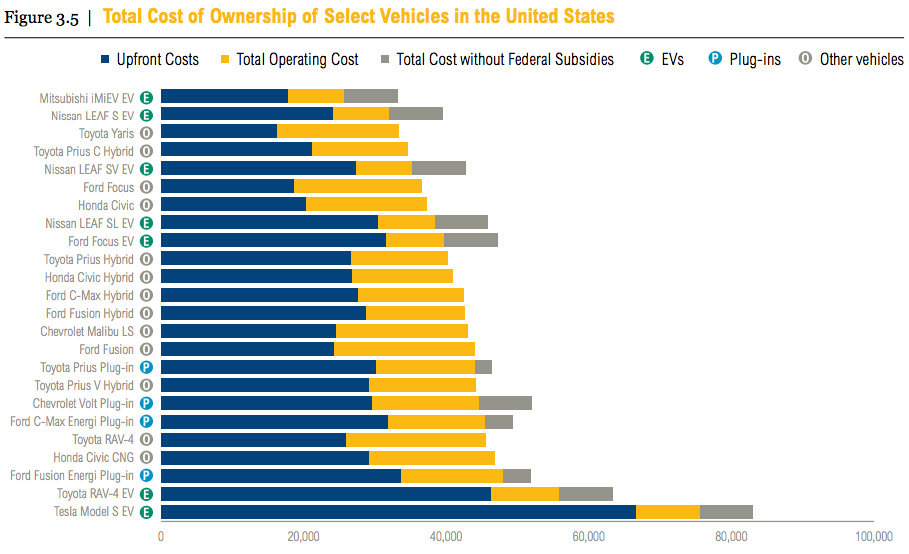A new report, Seeing is Believing, focuses on the fact that tackling global warming doesn’t just protect us from disaster, disease, and premature death; it can also result in considerable economic boons.
Joshua S Hill recently highlighted some of the electricity matters and the general story over on sister site CleanTechnica, but I wanted to also highlight a very interesting chart that I found in the report on the fact that electric cars can save you money (assuming you are an “average” person):
As the chart shows (but it may take awhile to notice, as it’s so full of information), typical total cost of ownership for some electric cars is lower than for comparable hybrid or gasoline vehicles (based on US driving, maintenance, and fuel averages).
In particular, the Nissan Leaf SL and the Ford Focus EV cost less than the:
- top-selling Toyota Prius Hybrid
- Honda Civic Hybrid
- Ford C-Max Hybrid
- Ford Fusion Hybrid
- Chevy Malibu LS
- Ford Fusion
- Toyota RAV4
- Honda Civic CNG
Some plug-in hybrid models, the Chevy Volt and the Ford C-Max Energi, also offer a lower cost than the Toyota RAV4 and the Honda Civic CNG.
The Mitsubishi i-MiEV and the Nissan LEAF S are cheaper for consumers than everything above and the basic Toyota Yaris and Toyota Prius C Hybrid.
Of course, this doesn’t take into account drive quality. Electric cars offer much better acceleration, a smoother ride, a quieter ride, cleaner air, and also the convenience of charging at home.
The biggest challenges to getting more people to adopt these electric cars and others is really just awareness. Awareness that electric cars are on the market. Awareness that they are better to drive. Awareness that they are more convenient (save you time not visiting gas stations). And awareness that they are often cheaper… in the long term.
If you haven’t tested out an electric car yet, I highly recommend it. There are all sorts of attractive electric cars on the market now. My favorites are the high-performance (and high-cost Tesla Model S) and the BMW i3, but I like almost all of them!
Chart via World Resources Institute

So what is the driving profile of an average person? Can those assumptions be written down? For example, average statistics about your weekday commute, your weekend recreational trips, monthly business trips, rare long distance vacation trips in a year. Your assumed place of residence and time of year for the comparisons.
Those are listed in the WRI report (http://www.wri.org/sites/default/files/seeingisbelieving_working_paper.pdf ) alongside the chart, page 79.